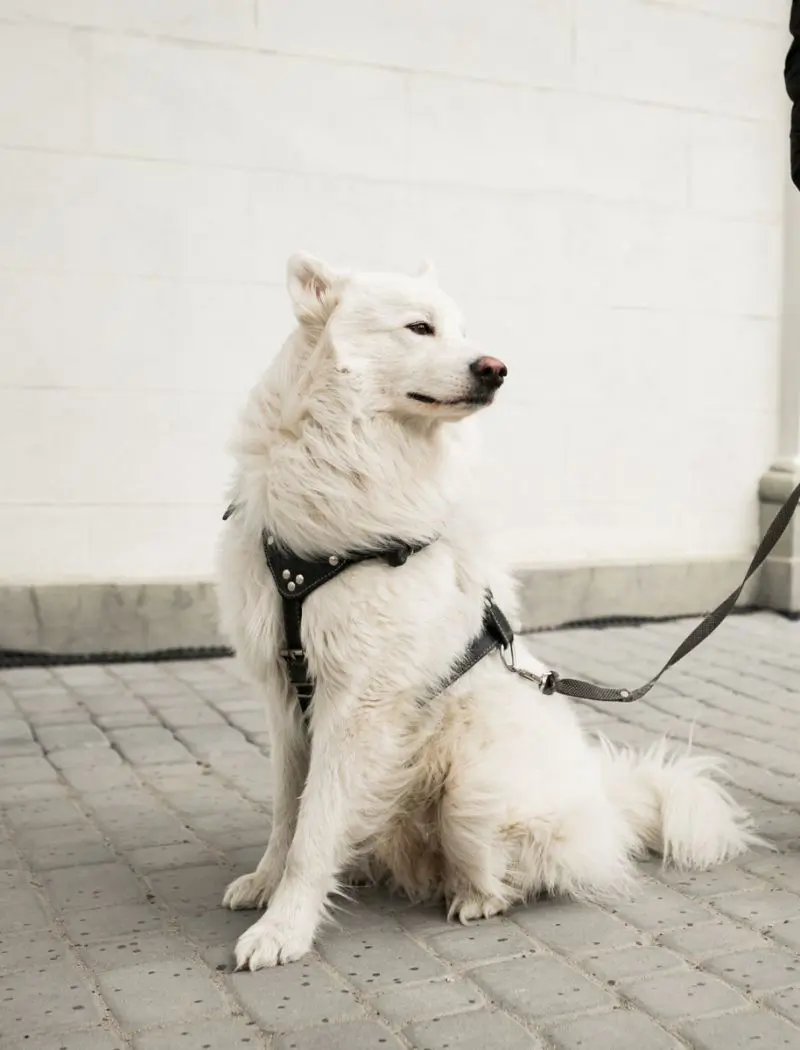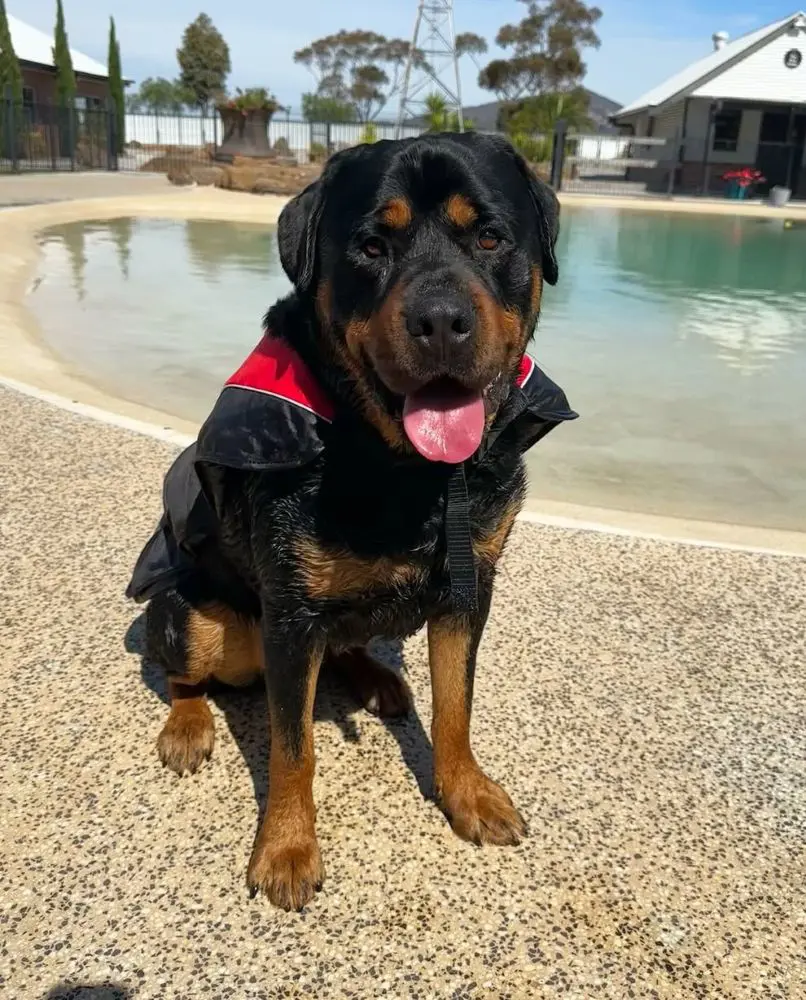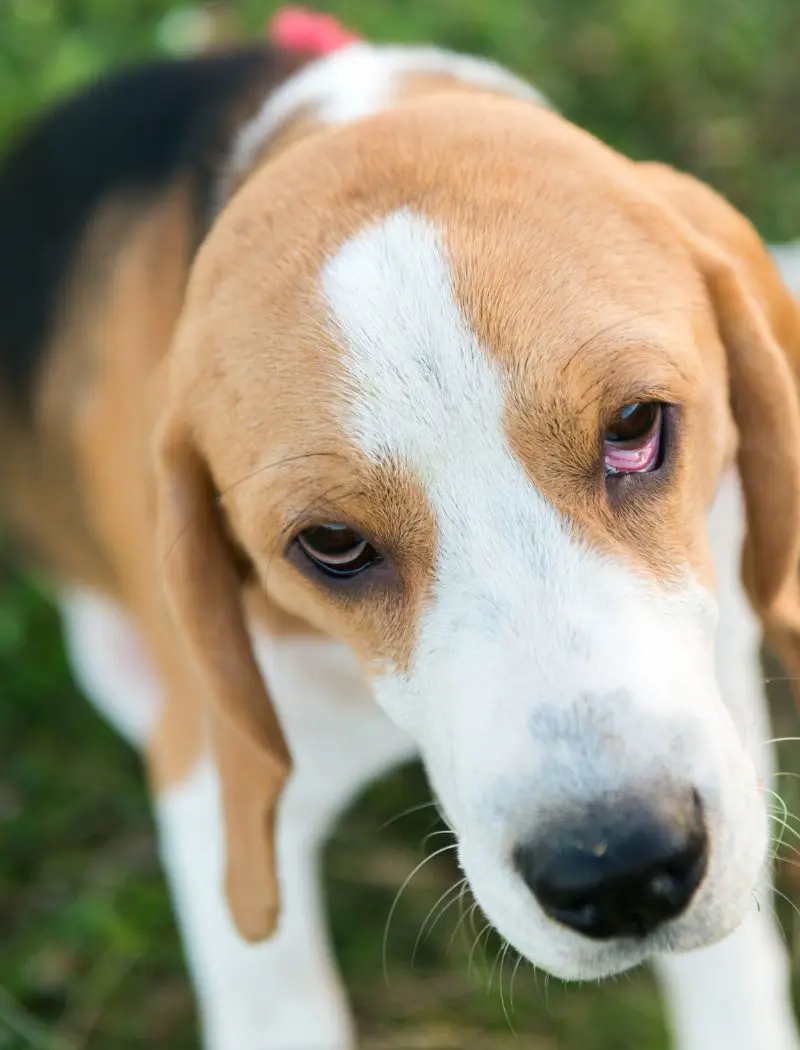Why Is My Dogs Nose Dry?
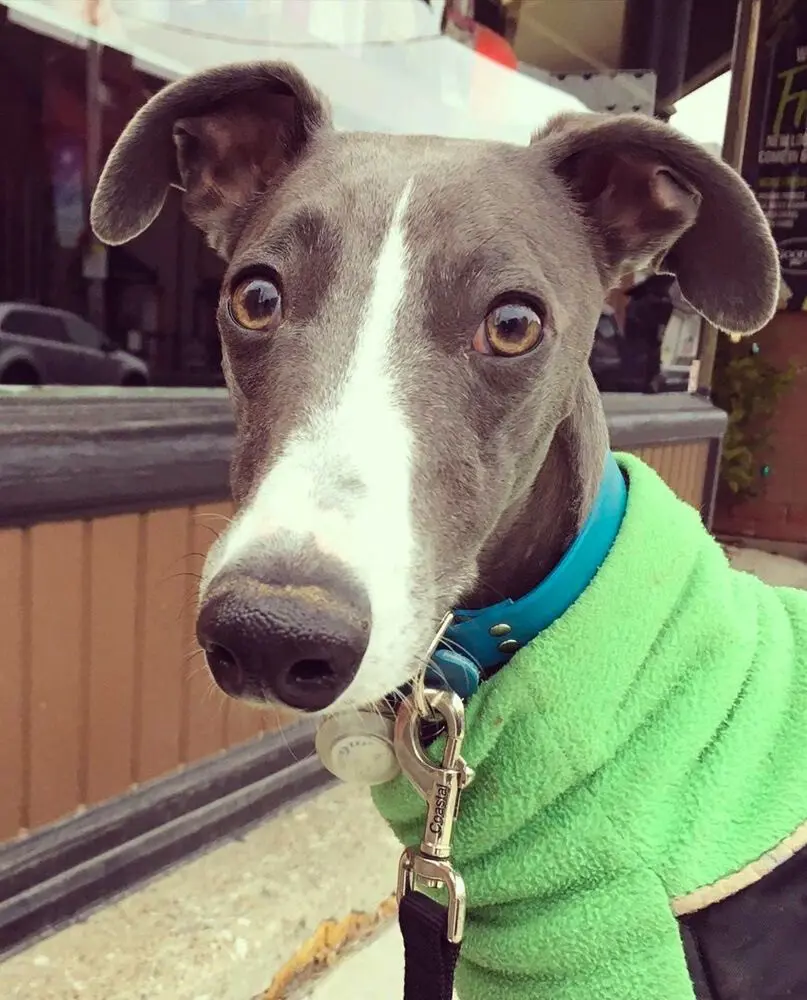
Dogs love to lick their noses to keep them wet and moist. The moisture on a dog’s nose helps capture and dissolve scent particles from the environment.
Still, pet owners might occasionally notice dried or cracked noses on their dogs. While this abnormality can be mostly ignored, it can become a cause of concern for parents if the dry nose appears as a symptom of a serious illness or health issue.
In this article, we'll discuss the circumstances where dryness in a dog's nose occurs naturally, health issues related to the condition, diagnosis, and treatment.
What Does Dog Dry Nose Mean?
Dry nose in dogs can appear rough, chapped, or flaky, sometimes with a noticeable change in color or texture. This condition is quite common and can occur for several benign reasons, such as changes in the weather, sleeping patterns, or natural variations in nose moisture. It is normal for a dog's nose to alternate between being wet and dry throughout the day, depending on factors like activity levels and environmental exposure.
Generally, dogs dry nose should not be a cause of concern for pet owners. However, immediate measures should be taken if other symptoms, such as lethargy, loss of appetite, or discharge accompany the condition.
Additionally, pet parents should monitor for any additional signs of distress or discomfort. If the dry nose persists or is accompanied by cracks, bleeding, or other symptoms, consulting a veterinarian is advisable to rule out conditions like allergies, infections, or autoimmune diseases.
Reasons For Dry Dose Nose
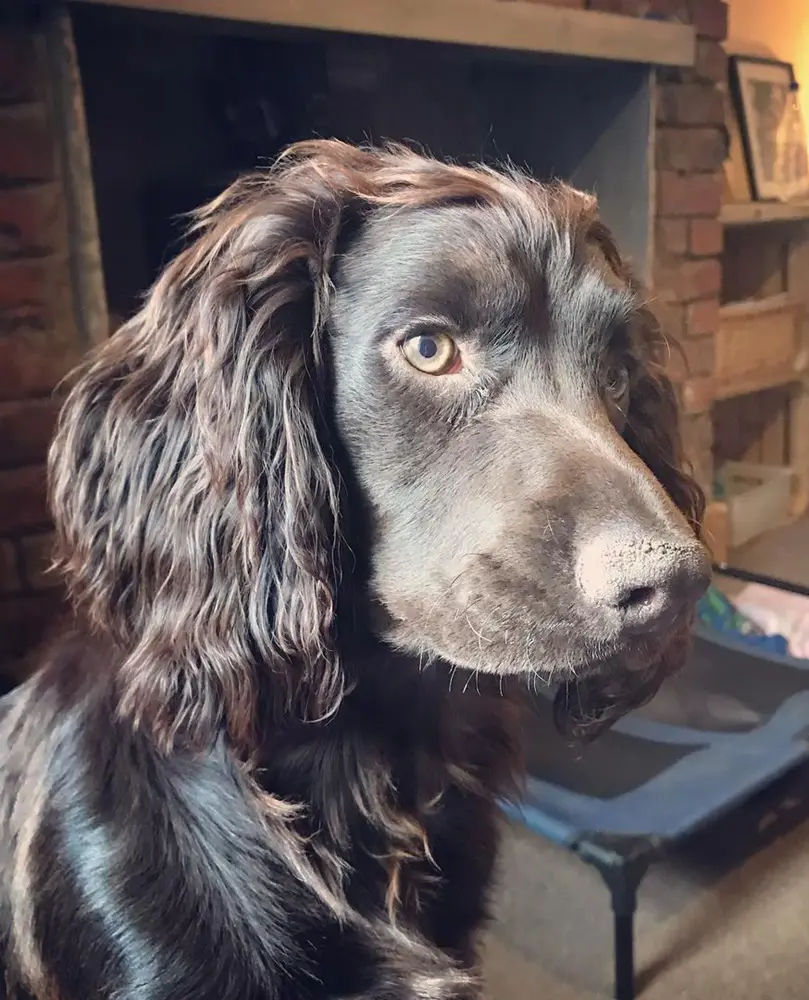
Occasional dry nose in dogs is harmless. In fact, it is more of a physical attribute than a flaw.
As the dog adapts to its immediate surroundings, a dry nose can occur as a bodily reaction. It can also arise if the dog refrains from licking its nose.
Here are some possible cases where dog nose dryness can occur naturally:
Sleep
Dogs typically stop licking their noses during sleep, which naturally keeps them moist. As a result, it's common for a dog to wake up with a dry nose. This dryness is temporary and usually resolves once the dog wakes up and starts moving around.
Licking their nose or drinking water helps restore moisture. The dryness is a natural part of their sleep cycle and does not indicate any underlying health issues. Owners may notice this particularly after longer naps, but it’s usually nothing to worry about.
Old Age
As dogs age, their bodies undergo various physical changes. This includes reduced oil production, which can lead to a drier nose. Older dogs may also have less frequent hydration habits or a decrease in the mucus production that typically keeps their noses moist.
Additionally, senior dogs are more prone to certain conditions that could contribute to nose dryness, such as reduced metabolism and changes in skin texture. While a dry nose due to aging is usually normal, it's essential to monitor for other signs of discomfort or health issues.
Dehydration from Exercise
Canines can become dehydrated during exercise, especially in hot weather or after prolonged physical activity. Panting, a dog's natural cooling mechanism, results in moisture loss.
Dogs may also lose fluids through sweat glands located in their paws. It's crucial to provide fresh water during and after exercise to prevent dehydration. A dry nose from exercise is temporary and can be resolved by keeping the dog hydrated.
Environmental Factors
Weather conditions like dry air, wind, heat, and cold weather can all contribute to a dog's dry nose. For instance, being in a heated room during winter or an air-conditioned space in summer can reduce the moisture in a dog's nose.
Similarly, exposure to windy conditions or direct sunlight can cause dryness and even sunburn on a dog’s nose. These factors can cause short-term dryness that usually resolves once the dog is back in a more balanced environment.
Causes of Dry Nose In Dogs

Dry noses in dogs are not always triggered by natural causes. It can also result as a sign of deteriorating health in canines.
If these causes are responsible for the dry nose, immediate care might be needed to stop further worsening the dog's condition.
Allergies
If the dog nose is warm and dry, allergens like pollen, dust, mold, or certain foods are considered to be the common causes. When a dog has an allergic reaction, its immune system response to the allergen can lead to inflammation and dryness of the skin.
Dogs may also experience additional symptoms like sneezing, itching, or watery eyes. If a dry nose is suspected to be due to allergies, identifying and avoiding the allergen can help manage the symptoms. In some cases, veterinarians may recommend antihistamines or other medications to alleviate the allergic response and restore moisture to the dog's nose.
Sunburn
Dogs, especially those with light-colored noses or thin fur, can be susceptible to sunburn. Prolonged exposure to the sun's ultraviolet (UV) rays can damage the sensitive skin on a dog's nose, leading to dryness and peeling. In severe cases, sunburn can cause pain and even increase the risk of infection.
To prevent sunburn, provide shade for dogs during peak sunlight hours and apply pet-safe sunscreen to vulnerable areas. If a dog's nose appears sunburned, keep it moisturized and protected to promote healing and prevent further damage.
Illness or Fever
A dry nose can sometimes indicate that a dog is ill or running a fever. A sick dog's body may produce less mucus or get dehydrated more quickly.
A persistently dry and warm nose, especially if accompanied by other symptoms such as lethargy, vomiting, or diarrhea, may warrant a visit to the veterinarian to rule out underlying illnesses. Early detection and treatment of the illness can help restore the dog's overall health and maintain proper hydration.
Skin Conditions
Skin-related symptoms often result in inflammation, irritation, or abnormal skin growth on the nose. Conditions like dermatitis or infections disrupt normal barrier function in the skin, leading to dryness and cracking.
Some skin disorders, such as nasal hyperkeratosis, cause an overproduction of keratin, resulting in thick, crusty layers on the nose that prevent natural moisture retention. Additionally, skin allergies can trigger an immune response that dries out the skin on the nose.
Auto-Immune Disease
Auto-immune diseases occur when a dog's immune system mistakenly attacks its tissues. Conditions such as pemphigus or lupus can lead to chronic inflammation and sores on a dog’s nose. The immune response damages the skin cells and disrupts the normal moisture balance.
Dogs with auto-immune diseases may also exhibit other symptoms like skin lesions, hair loss, or changes in pigmentation.
Diagnosing Dry Nose In Dogs
Consultation with a vet might be necessary where symptoms of dry nose persist or when home-based measures are ineffective. A vet may conduct a series of tests to identify the culprit behind the condition.
Medical History Review
The vet will ask the owner detailed questions about the dog's recent activities, diet, and any new environmental exposures. The vet may also inquire about any other symptoms observed, such as sneezing, lethargy, or changes in appetite.
The dog's medical history is necessary for the vet to identify any patterns or potential triggers, such as exposure to allergens or chemicals.
Physical Examination
A physical test is vital to closely examine the nose and surrounding areas. The vet will look for signs of cracking, sores, discoloration, or lesions on the nose that could indicate an underlying skin condition or infection.
Similarly, they will also check the dog’s eyes, ears, mouth, and skin for additional symptoms. The vet may palpate lymph nodes and check for fever, which could indicate an infection or auto-immune condition.
Allergy Testing
If allergies are suspected as a cause of the dry nose, the vet may recommend allergy testing. This can include skin tests, where small amounts of common allergens are injected into the skin to observe for reactions or blood tests.
These tests help identify specific allergens that might be causing dryness and irritation. Identifying allergens allows the vet to suggest appropriate management strategies, such as dietary changes.
Blood Tests and Urinalysis
These procedures are crucial diagnostic tools to identify any conditions that could contribute to a dry nose. Blood tests can reveal infections, inflammation, autoimmune diseases, or metabolic disorders like kidney or liver disease.
Moreover, a complete blood count (CBC) and serum biochemistry profile help the vet assess organ function, hydration status, and the presence of any systemic diseases. Meanwhile, urinalysis provides additional information about the dog’s kidney function and hydration levels.
Biopsy or Skin Scraping
This diagnostic procedure involves collecting a small sample of skin tissue from the nose or affected area for microscopic examination. Biopsy is particularly useful for diagnosing skin conditions, such as nasal hyperkeratosis and fungal infections. It helps determine the exact nature of the skin disorder by identifying abnormal cell growth, inflammation, or infection.
On the other hand, skin scraping is used to detect external parasites like mites that might cause dryness or irritation.
Environmental and Lifestyle Assessment
This method evaluates the different aspects of a dog's life, including daily activities, living conditions, and potential exposure to environmental factors. The vet may ask about the dog's time spent outdoors, exposure to extreme weather conditions, use of heating or air conditioning at home, and contact with potential irritants like household cleaners or chemicals.
Understanding these factors helps identify non-medical causes of dryness, such as sunburn or chemical irritation.
Trial Treatments
The trial and error method involves using specific interventions to observe the dog’s response and help diagnose the cause of the dry nose. For example, if an allergy is suspected, the vet might prescribe antihistamines or a hypoallergenic diet to see if symptoms improve.
If dehydration is a concern, increased water intake or a humidifier might be recommended. Moisturizing balms or ointments might also be applied to the nose to help restore moisture and reduce dryness.
The dog’s response to these treatments can provide clues about the underlying cause. If symptoms improve, it confirms the suspected diagnosis and helps tailor long-term management strategies.
Follow-Up Examinations
After initial treatment, the vet will re-evaluate the dog to check for improvements or any new symptoms. During these visits, the vet may repeat physical exams or diagnostic tests to ensure the dry nose is resolving.
Follow-ups allow the vet to fine-tune the treatment approach, providing the most effective care for your dog. This can also help identify any issues that were not initially detected.
How to Treat Dog Dry Nose?
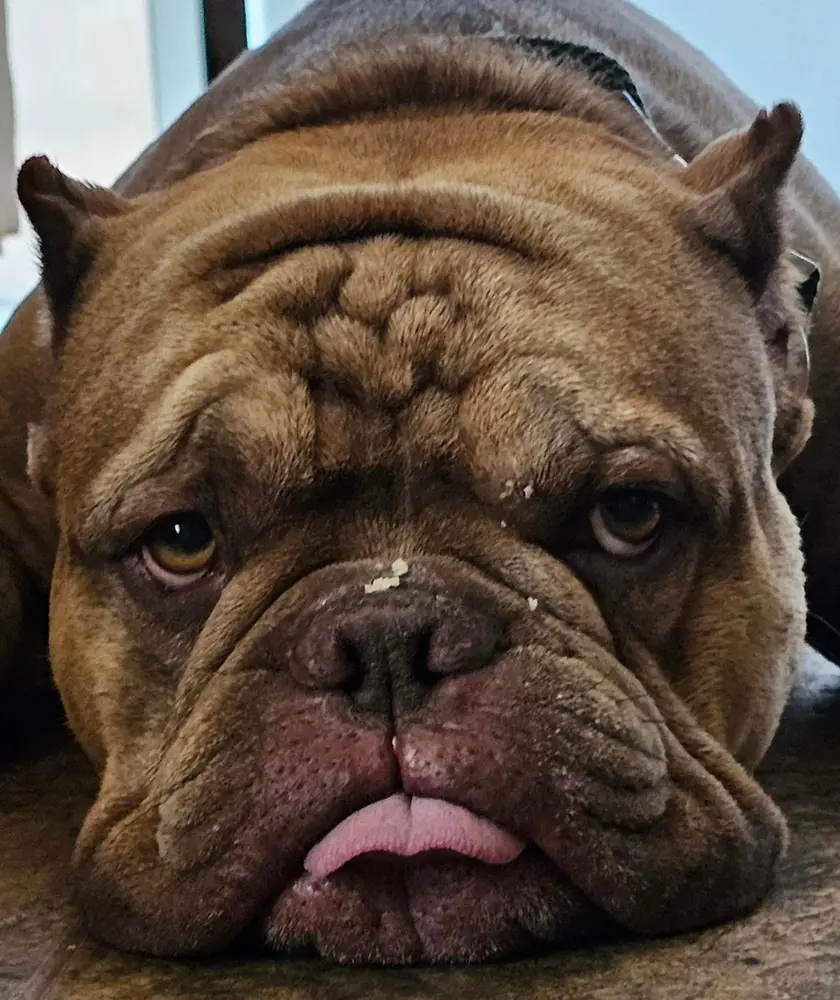
Treating the dry nose in dogs can be tricky. In most cases, the symptoms alleviate after a while. However, in severe cases, you may need to consult a veterinarian and seek appropriate care.
While a dry nose can be caused by a series of factors, treatment can vary depending on the actual cause. Here are some methods of treatment based on different causes:
Hydration
- Increased Water Intake: Ensure the dog has access to fresh, clean water at all times. Proper hydration helps maintain overall moisture levels, including the nose.
- Humidifier: Add a humidifier to the dog’s living environment to help maintain moisture in the air, which can be beneficial if the dryness is due to low humidity.
Moisturizing
- Nasal Balms and Ointments: Apply pet-safe moisturizers or balms specifically designed for canine noses to soothe and hydrate dry areas. These products often contain ingredients like shea butter or coconut oil.
- Natural Remedies: Coconut oil or aloe vera gel can be used as natural moisturizers. Make sure these products are safe and applied in small amounts to avoid ingestion.
Environmental Adjustments
- Avoid Extreme Weather: Limit your dog’s exposure to harsh weather conditions. Provide shade and protection from the sun, especially for dogs with light-colored noses.
- Chemical Avoidance: Use pet-safe cleaning products to avoid exposing the dog to potentially harmful chemicals or irritants.
Dietary Changes
- Special Diets: Provide food that is rich in fatty acids like omega-3 and omega-6 to improve skin health and hydration. Adding fish oil or flaxseed oil to a dog’s food may enhance moisture levels and support skin integrity. If food allergies are suspected, switch to a hypoallergenic diet or novel protein source.
Recent posts
Dogs
What Are Dogs Afraid Of? 10 Common Dog Fears And Phobias
Becoming a dog owner comes with certain responsibilities, including identifying their fears and phobias. From an unpleasant sound to an unfamiliar scent, many factors can trigger a fear response. Understanding a dog's psychology can be complicated; a...
How To Put A Dog Harness On: Step By Step
A dog harness is a popular and safe alternative to a neckband that is designed to distribute pressure more equally across the structure while walking or running. They are worn around the chest and torso, making them a comfortable option for many dogs...
15 Webbed Feet Dogs Breeds That Can Swim
Dogs often become excited when they are near a water body like a pool, river, or beach. Unlike cats, canines are not wary of water and are usually seen enjoying their swims at their nearby water hole. However, enthusiasm alone doesn't dictate a dog's...
20 Fun Activities For Dogs During Winter
Winter can be a great time to embrace the chilly season with creative activities that keep your furry friend happy and entertained. They provide a perfect opportunity to explore unique ways to bond with your dog. From snowy outdoor experiences to coz...
How To Introduce Baby To Dog: A Step By Step Guide
Adding a new baby to your home is exciting, but it can also be a big change for your dog. A dog's natural curiosity involves a patient, prepared, and considerate introduction to a newborn baby. A smooth transition is important for the safety of your ...
Do Dogs Cry? What Does Their Tears Mean
Dogs are known to shed tears as a way to lubricate their eyes and not because of sadness or emotional pain like humans. Tears in dogs may indicate medical issues like eye infections or blocked tear ducts that may cause discomfort to them. It is very ...

